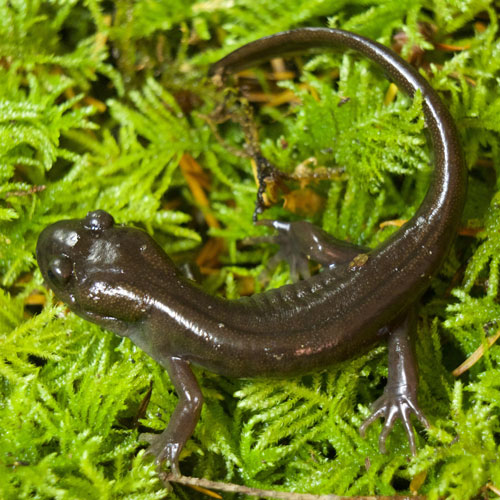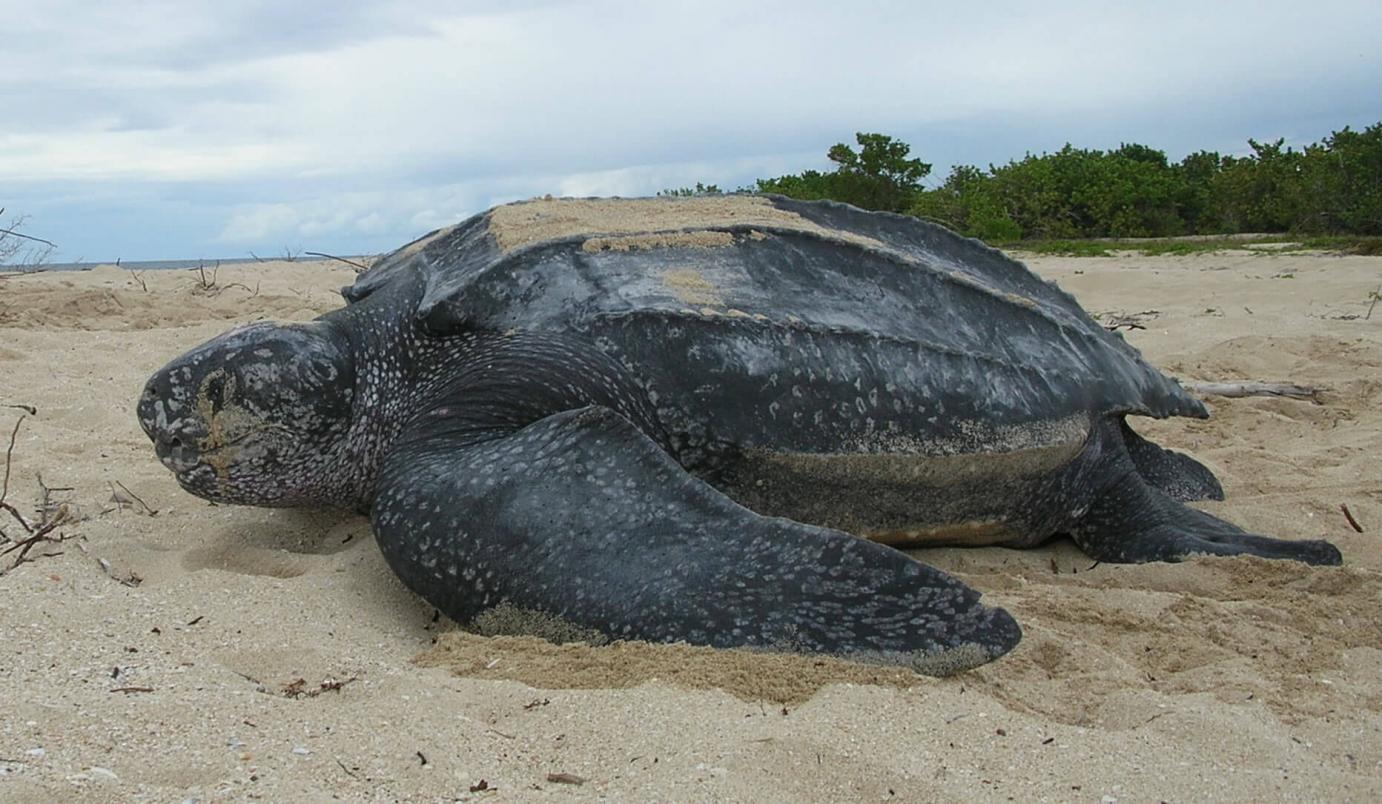Fast Facts
Where they live
- Have the largest distribution around the world compared to all other reptiles and possibly vertebrates.
- Can be found in the temperate and tropical waters of the Mediterranean Sea and the Pacific, Atlantic, and Indian oceans, and as far north as Canada and as south as New Zealand.
- Spend most of their time in the open ocean but also come to coastal waters to feed.
What they eat
- Jellyfish make up the vast majority of their diet.
- Can also feed on other soft-bodied animals including octopus and squid.
Breeding
- Nesting season varies by region and, unlike other sea turtles, females do not always return to the same beach they were born to lay their eggs.
- Females dig a nest in sandy tropical beaches, lay around 100 eggs, and cover their nest with sand.
- The young hatch after about 60 to 65 days and are born with characteristic white ridges along their shell and flippers.
Cool Biology Facts
- The world record for largest leatherback sea turtle was a 2.6 meters long male weighing 2,020 pounds!
- Leatherback sea turtle can dive deeper than any other turtle.
- Can dive up to 1,280 meters while holding their breath for up to 85 minutes.
Threats
- Although their Atlantic populations are steady or increasing, their Pacific populations are rapidly declining due to harvesting of eggs and nesting females, accidental capture in fishing nets, and coastal development.

Amphibians & Reptiles of Washington
Do you know where rattlesnakes live in our state? Or which salamander breathes through its skin? Explore the fascinating diversity of the 26 species of amphibians and 28 reptiles found in Washington state.

